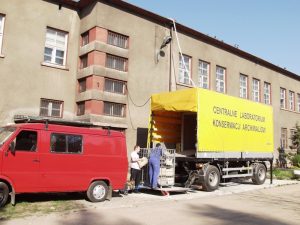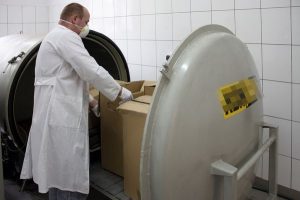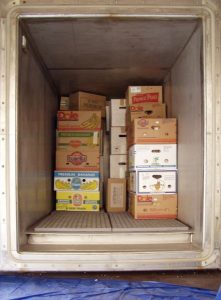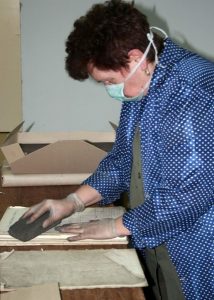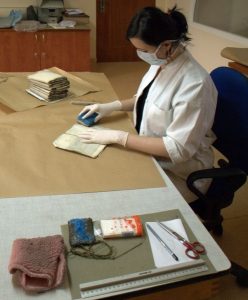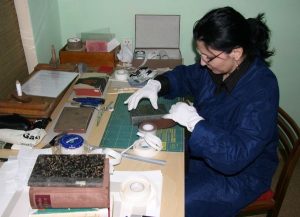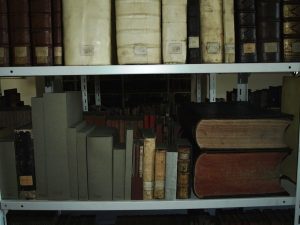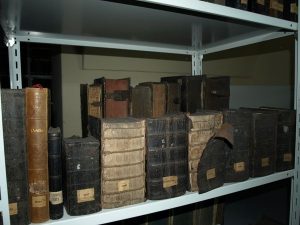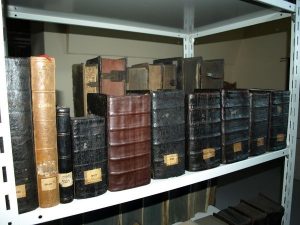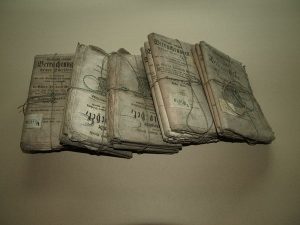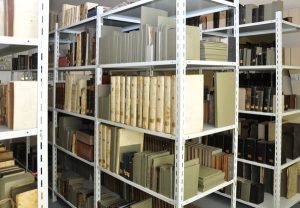The unsuitable storage conditions which the various Cieszyn library and archive collections were kept in for many decades is clearly reflected in their state of repair. The deformed book text blocks, covered in a thick layer of dust, torn covers and deformed fascicles, in conditions of constant fluctuations of temperature and humidity, became a food source for microorganisms.
Apart from improvements to the library and archive stores, the implementation of measures aimed at the comprehensive safeguarding and repair of the collections – in particular their disinfection – became a priority.
To this end a mobile fumigator chamber was brought to Cieszyn, which was used to disinfect the books and archive materials belonging to the Lutheran Parish, the Museum of Cieszyn Silesia and the Monastery of the Brothers Hospitallers’ Order. The resources of the Cieszyn Branch of the State Archives, which were also suggesting the presence of mould and bacteria, were disinfected in the fumigator chamber belonging to the State Archives after being transported to Katowice. The Cieszyn archive materials were also cleaned, and subsequently given conservation treatments, consisting of straightening out and flattening deformed documents, minor repairs and storing them in dust jackets made of acid-free paper and acid-free cardboard boxes. The collections of the Lutheran Parish, the Order of the Brothers Hospitallers and the Museum of Cieszyn Silesia were all given similar treatment. Gradually, the books and periodicals were cleaned, straightened, glued or supplied with dust jackets of acid-free paper. The archive materials, in turn, were stored in cardboard boxes after cleaning and flattening.
The funding was not only used to purchase the materials and agents essential for carrying out those measures, but also in order to employ experienced bookbinders and book restorers, specialised in working with historical collections. These interventions were carried out under the supervision of restorers from Książnica Cieszyńska, where similar work, done over a decade earlier, meant most of the historical book collection had been safeguarded before the project was begun. The expe rience gained then, but particularly the standards of care achieved in Książnica Cieszyńska, became the basis for the programme of care carried out in Cieszyn’s other historical libraries.
